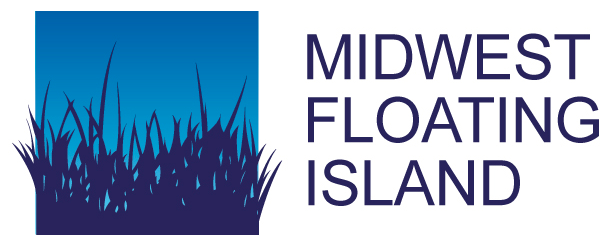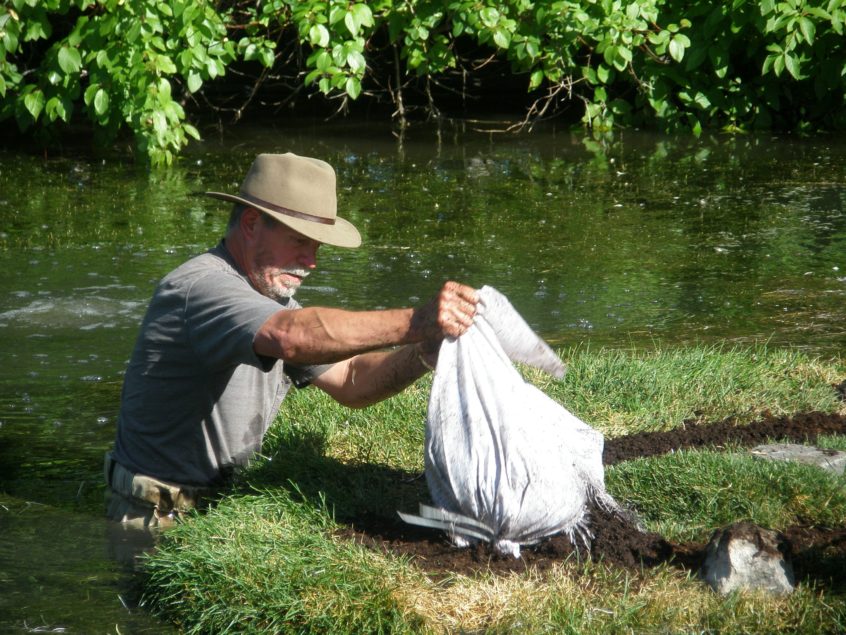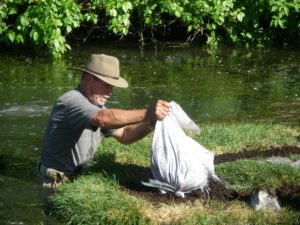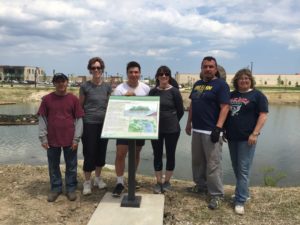Today BioHaven® floating islands can be found all over the world. But what was the start of this successful idea?
A graduate of University of Wisconsin, Madison, Bruce Kania led the team that created the islands. He thought of Madison as an urban think tank and it helped him foster many of his ideas. While attending the university, he founded a recreation tabloid which focused on hunting and fishing across Wisconsin.
After living in Wisconsin, Bruce eventually moved to Shepherd, Montana, in 1999. Bruce came up with the initial idea for floating islands when he was walking his dog, Rufus, back in 2000. The black dog jumped into a pond near his home and came out stinking and looking red. That couldn’t be good for the dog or any other surrounding animals near the water. Bruce was an inventor and he thought to himself that there had to be a solution to our poor water quality in the United States.
Back in Wisconsin he had once worked as a fishing guide. The biggest muskies and bass had congregated beneath floating peat-bog islands, whose vegetation provided refuge and clean water. He wondered now if there was some way to replicate those wetlands — to create platforms for biofilms and habitat for wildlife. Bruce brought together a team of engineers and plant specialists, and they set to work.
Testing Artificial Floating Island Matrix
He and his team went through years of testing various prototype materials. Finally, they discovered that the material that worked the best to remove nutrients was 100% BPA-free recycled plastic water bottles. With the post-consumer materials they created an island capable of supporting the weight of plants and soil. Then, foam was injected to add buoyancy and let the island adjust to changing water levels. The fibers within the matrix proved to be excellent material for growing biofilm, while still allowing water to pass through it—the key features of a wetland. This allowed unwanted nutrients to be broken down by bacteria and biofilm forming on the island and in the plant roots.
In 2005, Bruce and his partners opened a BioHaven® prototype production facility at the Shepherd Research Farm in Shepherd, Montana and Floating Island International, Inc. was in business. Islands were launched in the US and Canada, Australia, New Zealand, Singapore, UK and Europe. Today, research is still constantly being done of the islands to study and improve the nutrient reduction. To see some of this research, click here.
Midwest Floating Island
Based in Saint Paul, Minnesota, Midwest Floating Island LLC is the exclusive licensee to manufacture the proprietary floating wetlands for the Midwest. Please contact info@MidwestFloatingIsland.com for more information.




One Comment on ““How BioHaven Floating Islands were Invented””
Looking for small island that could be used for trumpeter swan nesting on our small lake. Swan are large, so can these islands hold up to large birds without flipping over or tipping???